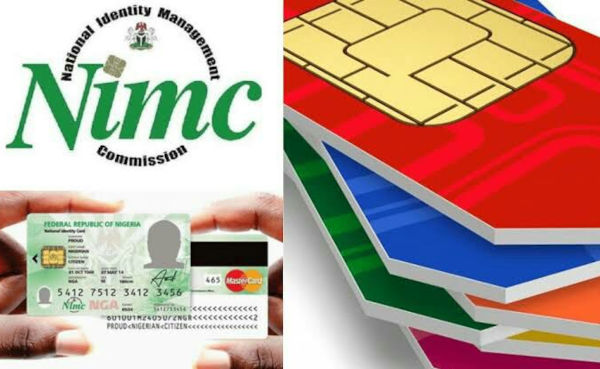It is not new to associate a strong currency with a stable economy, low inflation and interest rates. But on the other hand, a weak currency is mostly associated with economic instability, high inflation and interest rates.
The weakness of these currencies can have a number of negative consequences for the countries that use them. It can make it difficult for them to import goods and services, which can lead to shortages and higher prices. It can also make it difficult for them to attract foreign investment, which can slow economic growth.
Top 10 Weakest Currencies In The World
The top 10 weakest world currencies in no particular order and at the time of filing this report are:
1. Iranian Rial (IRR)
The main reason why the Iranian Rial is officially the weakest currency in the world is mainly based on the political tensions with the United States of America and the Iran-Iraq war.
The Islamic Revolution of 1979 caused a rapid decline in the value of the Iranian rial due to the huge amount of capital flight from the country. It was estimated that around $30-40bn left the country during the revolution.
In 2022, the value of the Rial fell by 29% with high speed after the death of Masha Amini – a 22-year-old Iranian woman who died in a hospital after having a heart attack at a police station(for alleged police brutality) and fell into a coma after allegedly being beaten for not wearing the hijab in accordance with government standards – which caused an international outrage.
- 1 pound = 53,817 rials
- 1 USD = 42,250 rials
- 1 Naira = 53.76 rials
2. Vietnamese Dong (VND)
The Vietnamese Dong is the second weakest currency in the world.
Vietnam was reunified in July 1976 and the dong reunified to create a single currency in May 1978 and although the currency was reworked in an attempt to increase the currency’s value, miscalculations caused inflation to hit 774% in 1986. The Vietnamese dong has since been stabilised but the economic shocks are still felt.
- 1 pound = 30,483.78 Vietnamese dong
- 1 USD = 23,945 Vietnamese dong
- 1 Naira = 30.47 Vietnamese dong
3. Indonesian Rupiah (IDR)
The rupiah is the official currency of Indonesia. The name was derived from the Sanskrit word for silver, ‘rupyakam’.
The rupiah – which didn’t have international recognition from October 1946 to March 1950 – has been subjected to high inflation for most of its existence although various attempts have been put in place to maintain its value, all were eventually abandoned.
The Asian financial crisis of 1997, 2007-2008 Great Recession and the Covid-19 pandemic hit the currency hard and the rupiah has been weakened although the Indonesian economy has remained relatively stable.
- 1 pound = 19,479.47 rupiah
- 1 USD = 15311.30 rupiah
- 1 Naira =19.94 rupiah
4. Laotian Kip (LAK)
Laos is one of the poorest countries in Southeast Asia and the Kip has been their currency since 1955. It replaced the French Indochinese piastre.
- 1 pound = 24,552.65 kip
- 1 dollar = 19,260 kip
- 1 Naira = 25.08 kip
5. Sierra Leonean Leone (SLL)
The currency which was introduced in 1964 for a very brief period was worth more than a US dollar in the 1980s before suffering huge depreciation.
Inflation was cemented during the Sierra Leone civil war and even though several variations of the Leone have been introduced to stabilise the currency, inflation is still increasing and is currently at 37.8%. Until the 1980s, the Leone was worth more than the U.S dollar. In July 2022, a new Leone was introduced even though the old Leone denominations are still in circulation.
- 1 pound = 25,153.30 SLL
- 1 dollar = 17,750 SLL
- 1 Naira = 25.86 SLL
6. Paraguayan Guarani (PYG)
The Guarani is the national currency of Paraguay. Guaraníes, which was created in 1943 was divided into 100 céntimos – which is no longer in use – due to inflation as it remains one of the weakest currencies within South America. In 2011, it was announced that plans to revalue the currency were in motion but it was suspended.
- 1 pound = 9,260 PYG
- 1 USD = 7266.78 PYG
- 1 Naira = 9.46 PYG
7. Uzbekistan Sum (UZS)
The Sum – which means ‘pure’ in Uzbek – is the official currency of Uzbekistan. Uzbekistan has the “world’s most worthless coin” which is worth less than 1⁄9400 of a US cent and its largest denomination is the 100,000 sum. Although the sum is considered one of the weakest currencies in the world, the country has made a couple of economic reforms in order to help its economy.
- 1 pound = 15,392.30 sum
- 1 USD = 12,075 sum
- 1 Naira = 15.72 sum
8. Burundian Franc (BIF)
The franc became Burundi’s currency in 1916. In 1960, Burundi used the Belgian Congo currency but began issuing its own francs in 1964. The Burundian franc continues to remain a weak currency as the country deeply depends on humanitarian assistance even though food production is strong in the country.
- 1 pound = 3,610.66 Franc
- 1 USD = 2, 833 Franc
- 1 Naira = 3.69 franc
9. Congolese Franc (CDF)
The Congolese franc is the currency for the Democratic Republic of Congo. Since the 1980s, the economy of the DRC has been declining and this has caused the value of the Congolese franc to fall swiftly. Another thing which stopped the country’s economic developments was the conflicts between the First and Second Congo wars as well as stagnation in economic development.
- 1 pound = 3,146.72 CDF
- 1 USD = 2,468.50 CDF
- 1 Naira = 3.21 CDF
10. Venezuelan Bolivar (VEF)
The Bolívares has been the official currency of Venezuela since 1879 which was named after Latin American independence hero Simón Bolívar. At one point, the Bolivar was one of the most stable and valuable currencies until the government decided to adopt a floating exchange rate in 1964 which added to the country’s currency fast depreciation.
Despite many attempts to cement the currency, it was struck by hyperinflation in 2012, increased to 65,374% in 2018 but dropped to around 400% in 2023 even though the economy is still in a state of hyperinflation.
- 1 pound = 4,026,235.39 bolívares
- 1 USD = 3,164,299.91 bolívares
- 1 Naira = 4,120.69 bolívares
Note: All of these currency equivalents are as of the time of filing this report and may change.





























